What? |
|---|
|
Unzen Onsen (雲仙温泉) is a hot spring resort on the slopes of Mount Unzen (雲仙岳). There is only one attraction in town, and that are the Unzen Jigoku (雲仙地獄), better known in English as “hells”. Water comes boiling out of the surface and covers the whole town in smoke and a sulfuric “aroma”. Tuned down, these hells are the foundation of the many onsen (hot spring baths) around town. In the vicinity are a few waterfalls of which I visited the Ayugaeri Falls (鮎帰りの滝) and the Issaikyo Falls (一切経の滝) of which the latter can be reached on foot from Unzen Onsen. The Hara Castle Ruins (原城跡) are the remains (or in this case, the lack of remains) of the last stronghold of the Shimabara Rebellion in the 17th century. Many farmers who were repressed as Christians couldn’t swallow additional tax increases and stood up against the local lord. They and their masterless samurai allies took their final stand at the southern tip of the Shimabara Peninsula. Now there is barely anything left, save for silence and remembrance. |
Where? |
|
Unzen Onsen in Nagasaki Prefecture (長崎県) is located in the center of the Shimabara Peninsula (島原半島). It can be reached by bus from the surrounding cities of Shimabara (島原) and Isehaya (諫早), but also from Nagasaki (長崎). That being said, they aren’t cheap and it is a pain to find the correct schedules so I can only recommend to take a rental car. That rental car will also serve to take you to the waterfalls. Technically they aren’t unreachable by public transport, but again, so much hassle. If you want to know the public transport options, just pm me. The Hara Castle Ruins are a roughly 1000yen bus ride from Shimabara Station (島原駅). 
|
URL |
|
Japan Guide (Unzen Onsen) Hara Castle Ruins |
My plan today was to do nothing. Absolutely nothing. That was a good plan, it was the reason why I came here. One thing I didn’t take into account was that the complimentary breakfast started at 8 o’clock. And well, if you’re up anyway…
Eventually I decided to get in my car and drive a little bit around. One spot the peninsula seems to be proud of are the ruins of the Hara Castle. I have visited many castle ruins in Japan and I have seldom been disappointed, so it seemed like a good pick.
Let’s start with the obvious: there is not much left of the castle. It are ruins after all. In most cases I would just say “move along, there’s nothing to see”, and that’s actually what I thought of this castle too. Walking up to the main ruins you can enjoy rural life; the rustling of the wind in the trees, the lawnmower of one of the farmers, gentle rushing of the sea, some predator birds flying over, and just simply the smell of green grass. It’s all very nice and I love strolling through such a scenery, but it doesn’t convey any sense of war or samurai, or anything that has to do with castles. Some of the ruins I’ve seen in Japan were truly impressive. Nothing left but huge stone walls, where the layout of the castle grounds could still be figured out. But with Hara Castle ruins that’s not the case.
The site is huge, but even the stone walls are not that impressive. I was a bit disappointed until I read the explanation for this. The Shogunate ordered the walls of this castle to be destroyed not just by tipping them over, but by annihilating them. The stones were dragged away from the walls and then splintered into pieces, all this to destroy the rebellious spirit of the Christians in Kyushu. The fear of a repetition of the Christian rebellion that arose in Shimabara eventually led to more than 250 years of Japanese isolation and the ruthless persecution of people adhering the Christian faith.
I wouldn’t go as far as to say that this is a must stop, but if you pass along anyway just take a few minutes, maybe half an hour, and enjoy the quiet at this place that used to be drenched in blood of battle.
I decided to go back to Unzen Onsen to walk around town for a while, but in driving back I would first pass along the Ayugaeri waterfall.
This waterfall is a perfect example of Japanese twisted tourism planning going absolutely insane.
You can drive right up to the waterfalls. The approach goes via a rather small road which is tricky, but not as dangerous as the ones I had to conquer in Shikoku. The road ends in not only one, not two, not even three, but four completely empty parking lots.
Getting out of your car, the first thing you will see is a dilapidated teahouse with balcony/terrace that you don’t have a clue of what it’s there for. To my surprise it was in business though. Apart from the teahouse, you will immediately notice a few abandoned buildings. These are only a prelude of the vacation park/theme park/cottage settlement that should have been built a few decades ago. Now all these triangular buildings are fully overgrown.
You can immediately go down to the waterfall which isn’t bad in itself. It’s a nice waterfall. But that’s all. Going only a few 10m in any direction of the river you’ll find it is blocked. On one end a farmer decided to fence off his property. On the other end there is an artificial dam with a few workers houses that even the rats wouldn’t enter.
Looking at the bright side, I like atmospheric abandoned buildings. If it wasn’t for two motorcyclists (who parked their bikes appropriately in two different parking lots), I might’ve entered one of these triangular vacation homes. But my odd preferences are definitely not in the interest of the general public and so I cannot find a reason for the average tourist to stop by.
Eventually I got back to my hotel. It was still a little bit early so I decided to check out another waterfall. It’s located a bit outside Unzen Onsen town. To get to the Issaikyo waterfall, just go to the place that Google maps indicate, but instead of taking the last left, take one left earlier. Take the path that goes through the little torii gate.
Immediately I was transported in another world. The approach to this waterfall is completely different than the one that I went to earlier today. The natural overgrown path is only accessible on foot. It quickly leads to a place called Chiondo (智恩洞). It’s a small pathway through a bunch of enormous rocks. In front of it is another torii, behind it is a small temple dedicated to it (and as such mixing Buddhism with Shinto).
The waterfall on the other hand can be reached by taking a left a little bit before the Chiondo temple. Just like with the Ayugaeri waterfall there’s a bunch of buildings surrounding it. However these are all religious in character. As there was no one else there, the rushing of the waterfall and the creaking of the flags made for a very eerie atmosphere. I spent a good half hour here just sitting on one of the rocks. With eerie I don’t mean bad, on the contrary.
There was actually a path turning back to Unzen Onsen allowing me to make a beautiful loop.
Back in town I visited the hot spring fields better known as “hells” which were amazing. Somewhere inside of me there is a teenager who doesn’t want to be impressed by anything. With that attitude I entered the hells. Why, do you ask me? Because all over the place they are building new huge hotels that kind of spoil the whole atmosphere of a picturesque onsen town.
But the sheer size of the hells, the smoke and the horrible rotten egg-stench (a good thing in onsen language) made that I was quickly won over by its charms. Add to that the tragic history of Christians who were thrown into these boiling pits for executions, and you’ve got yourself a must see spot.
Otherwise there is not much to do in town. Contrary to for example Kinosaki Onsen, I think you are meant to stay inside your hotel and enjoy the baths over there. They were surprisingly few restaurants or a small eateries in the town. But if you stay in a good hotel that shouldn’t be a problem.
Getting back to mine, I enjoyed a hot rotenburo with a view and afterwards I fell asleep like one of the cats that I saw at the hells. So much for my day of doing nothing.
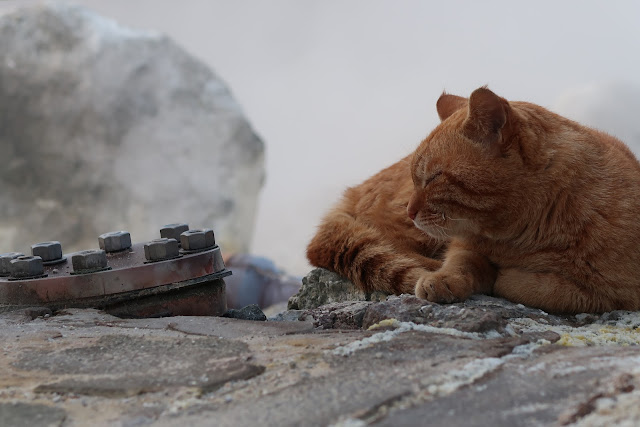
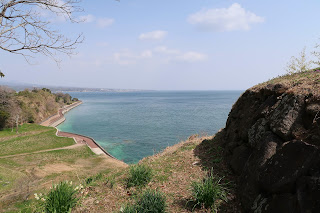
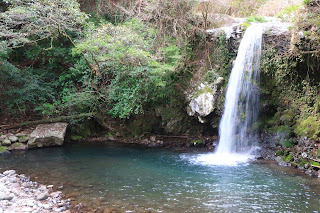
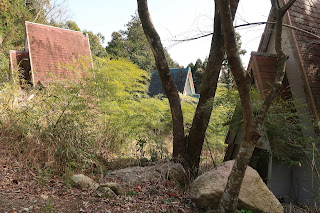
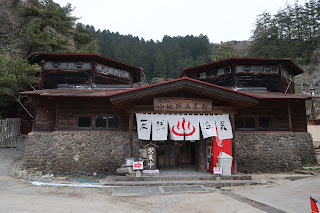

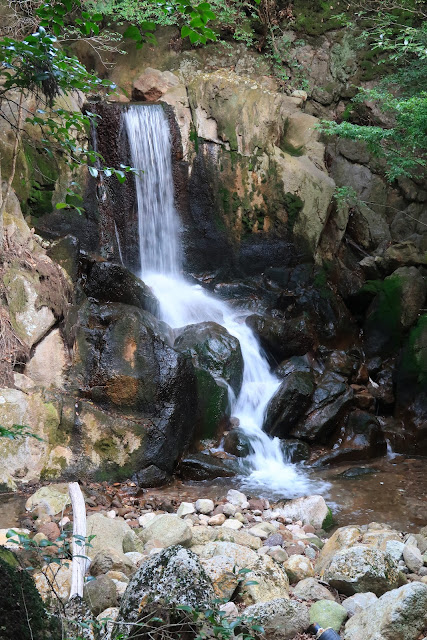

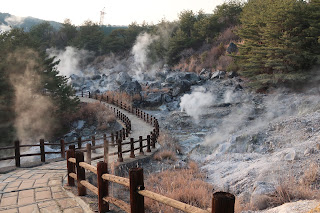











No comments:
Post a Comment